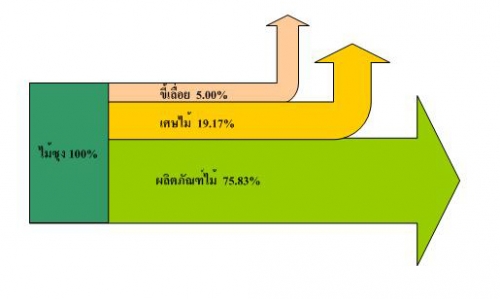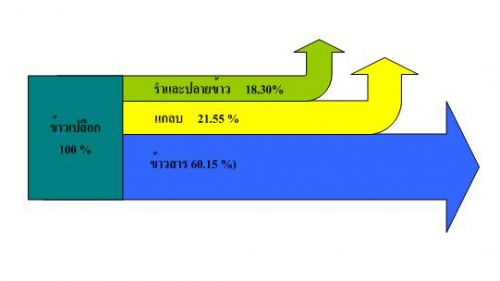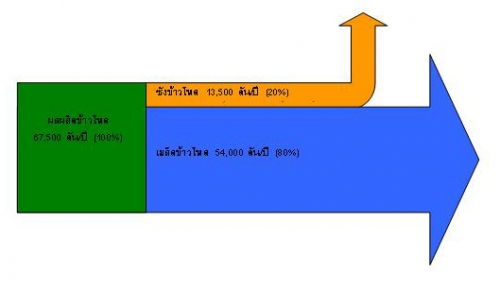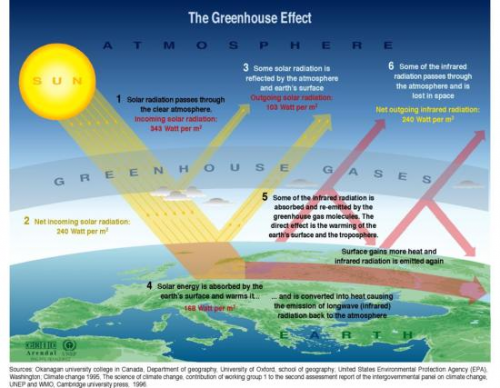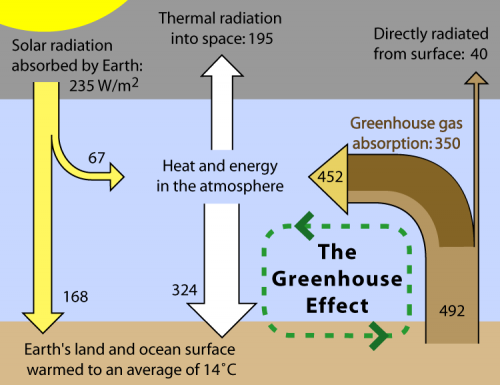The first Sankey diagrams in Lao language I have come across are from a management summary on “Alternative Energy and Energy Conservation in ACMECS countries”. It shows how much biomass from wood industry, rice mills and other sources is available in the People’s Democratic Republic of Laos as rejects, and could potentially be used for generating energy. All values in tons per year for 2004 or 2005, extrapolated to the whole country from 4 to 6 samples.
Wood Industry: pink arrow is for sawdust, dark yellow arrow for woodbits, summing up to roughly 25%
Rice Mills: green arrow is for rice bran, yellow arrow for husks, summing up to 40%
Corncobs: orange arrow (20%) is corncob reject that could potentially be used for energy generation.
Even though I don’t read or write Thai, I love those letters. For those of you who wish to read the summary in English (with only 2 Sankey diagrams), a translation is available. Update Nov 2008: Unfortunately the website http://www.dede-acmecs.com has gone offline
